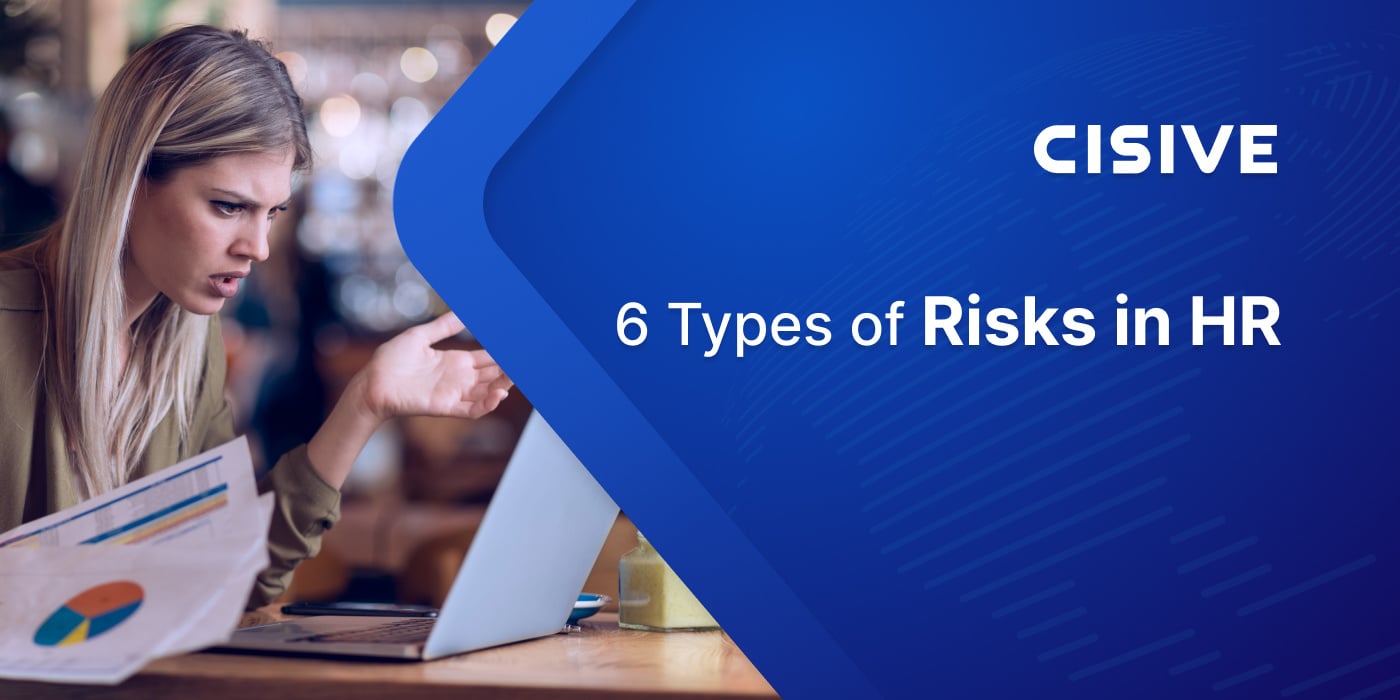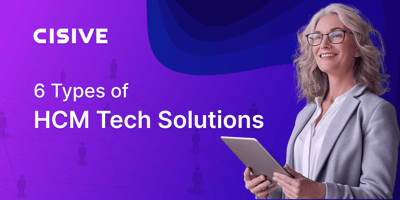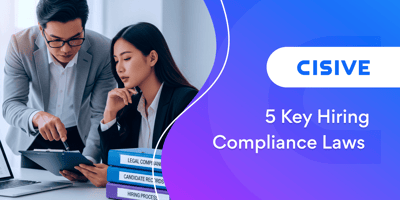

Ensuring you have the right people to fill key roles in your company is more complex than ever....

Many HR disasters occur as a result of compliance issues, inadequate training, and ineffective recruitment strategies. Others happen due to unclear policies or poor communication. Regardless of the reason it happens, an HR issue can cause widespread financial or legal damage, making it difficult for a company to recover.
Understanding the key essentials of HR risk management can help you reduce these risks and the sometimes devastating fallout when a problem arises. Below, we look at HR risk management, common risks, and why it’s important to have a management strategy in place.
Key Takeaways:Here are the key things you need to know about HR risk management:
|
HR risk management is monitoring and managing potential threats from your employees. You identify, assess, and mitigate workforce-related issues that could impact your company’s success.
Simply put, HR risk management means you protect your company from people-related problems. You find and fix issues that could hurt your workforce or business. This includes things like hiring mistakes, safety concerns, improper employee conduct, or employee conflicts.
This differs from general risk management because it focuses on human factors. While general risk management covers all business risks, HR risk management zeroes in on your employees. You deal with things like turnover, skills gaps, and workplace culture.
The main goal of HR risk management is to keep your workforce strong and productive. You want to avoid costly mistakes and legal troubles that disrupt production or hurt your employees. By managing HR risks effectively, you help your company succeed. You create a safer, happier workplace where employees can do their best work.

HR risks can impact various aspects of your business, including legal compliance, financial stability, employee well-being, and company reputation. Identifying and addressing common HR risks is crucial for maintaining a healthy, productive workplace and ensuring your organization's long-term success.
Let’s highlight a few of the most common risks.
Workforce management risks can include things like not having enough workers, having too many workers, or not using your workers' skills well.
When you don't manage your workforce well, it costs your business money and time. You might end up paying overtime because you don't have enough staff. Or you could waste money on workers who aren't busy. Bad workforce management can also make your employees unhappy, which can lead to poor work quality and high turnover.
Compliance risks are dangers you face when you don't follow laws and rules about how to treat workers. These risks happen when you break the rules about things like pay, safety, or fair treatment. You need to care about compliance risks because they can get you into big trouble with the government.
When you don't comply with state or industry regulations, you either pay fines or go to court. You could also lose good workers who feel treated poorly due to unfair business practices. Compliance issues put your company’s reputation at risk, which could impact public perception and lead to loss of revenue.
Ethical HR risks involve situations where you or your company might act in ways that go against moral principles or professional standards. These risks can include things like discrimination, harassment, unfair hiring practices, or mishandling confidential information.
You need to be aware of these risks because they can seriously damage your company's reputation, employee morale, and overall business success.
When you engage in unethical practices, you may face expensive lawsuits, hefty fines, or legal investigations. Your company could also lose talented employees who weren’t directly affected but don't want to work in an unethical environment. You might even struggle to attract new hires if word gets out about your company's questionable practices.
Financial HR risks involve the potential monetary losses your company may face due to human resource-related issues. These risks can stem from various sources, such as mismanagement of employee benefits, poor workforce planning, or inadequate compensation strategies. They impact your company's bottom line and overall financial health.
When you fail to manage financial HR risks effectively, it can cost your business in multiple ways. You might face unexpected expenses due to high employee turnover, legal fees from employment-related lawsuits, or increased benefit costs due to poor plan management. Financial burdens eat into your profits and threaten your company's long-term sustainability.
HR training and development risks occur when you fail to properly educate and train your workforce. Risks involve inadequate training programs, outdated materials, or a lack of professional development. They lead to a workforce that lacks crucial skills, knowledge, or competencies necessary for your business to thrive.
You may experience decreased productivity as employees struggle to perform their jobs effectively. Your company might fall behind competitors who invest more in their workforce's skills. You could face increased turnover as frustrated employees seek opportunities elsewhere, leading to higher recruitment and onboarding costs.
HR personnel and reputation risks involve the potential damage to your company's image due to the actions or behaviors of your staff. This risk occurs when your employees engage in unethical practices, make poor decisions, or mishandle sensitive employee information.
You may face legal action from fellow employees who were mistreated, leading to expensive settlements or court fees. Your company's reputation among current and potential employees would suffer, making it harder to attract and retain top talent. Poor public relations management could also lead to decreased employee morale and productivity, directly impacting your bottom line.
HR risk management involves a collaborative effort across multiple departments in your organization. Your HR team usually leads the process, but they work closely with department heads, legal counsel, and senior management.
HR professionals identify potential risks, while managers provide insights into day-to-day operations. Senior leaders approve strategies and allocate resources for implementation.
The goal is to create a comprehensive HR risk management plan that covers all bases. The document you create should outline identified risks, assessment results, and mitigation strategies. It should cover HR aspects like:
Regularly update this plan to address new risks and changing business needs.
Implementation involves multiple steps, such as:
HR risk management touches all aspects of human resources. It includes hiring practices to ensure an ethical, talented workforce and to avoid discrimination claims. It covers employee data protection to prevent privacy breaches. It also addresses workplace safety, performance management, and employee benefits.

Poor HR practices can lead to a cascade of issues that negatively impact your organization's performance and reputation. Problems can range from legal troubles and financial losses to decreased employee morale and productivity.
By adopting best practices, you provide a structured approach to managing HR risks. When you implement these best practices, you create a framework for addressing HR-related challenges and fostering a more productive work environment.
Tailoring your risk management strategy to your industry's specific HR risks means you focus on the most relevant threats to your business. You identify and prioritize risks that are common or particularly impactful in your sector.
If you run a healthcare organization, you might focus on risks related to employee burnout, patient privacy, and regulatory compliance. You could implement strategies like flexible scheduling, enhanced data security training, and regular audits to ensure compliance with healthcare regulations.
Actively seek out and understand new laws, changing industry standards, and updated regulations. This knowledge helps you anticipate potential risks and adapt your policies accordingly. By staying current, you can prevent violations and protect your company from legal issues.
If you work in HR for a tech company, you should regularly attend industry conferences and subscribe to legal updates. Let’s say you learn about a new data privacy law affecting your industry. You can then quickly update your company's data handling policies and train employees. This proactive approach helps you avoid potential fines and reputation damage from non-compliance.
Collaborating across departments means involving multiple teams in your HR risk management process. You seek input from different areas of your organization to identify and address potential risks. This provides you with a more comprehensive view of HR-related challenges throughout the company.
You might work with the IT department to address cybersecurity risks. The legal department can ensure that your strategy is compliant with local regulations. You can consult with finance to understand the impact of compensation policies on the budget. You can collaborate with operations to identify safety risks in different work areas.
A repeatable HR process involves consistently checking and evaluating your risk management strategies. You establish a routine schedule for assessing the effectiveness of your current practices. It helps you identify new risks and adjust your strategies as needed.
You might conduct quarterly reviews of your HR risk management plan. You’ll analyze data on employee turnover, workplace incidents, and compliance issues. You’ll assess the success of implemented strategies and identify areas for improvement. Based on these reviews, you can update your risk management approach.
By integrating software into your process, you’ll streamline and enhance your efforts. You can implement specialized tools to automate data collection, analysis, and reporting related to HR risks. Software with tools like those Cisive offers improves efficiency, accuracy, and consistency in your risk management activities. Software can help you identify patterns, track progress, and maintain records.
You might use an HR analytics platform to monitor employee turnover rates across departments. The software automatically flags unusual spikes in turnover, alerting you to potential issues. It generates reports comparing current data to historical trends, helping you spot emerging risks.
Background check software is a crucial tool for managing HR risks in your organization. It helps you verify candidate information and uncover potential issues before making hiring decisions. It helps you protect your company from legal liabilities, reputation damage, and safety concerns.
Cisive offers a comprehensive background check solution tailored to your specific industry needs. Our software covers criminal records, employment history, education verification, and professional license checks. You can customize the screening process to align with your company's risk tolerance and regulatory requirements.
With Cisive, you gain access to accurate, timely, compliant background check results. Our platform integrates seamlessly with your existing HR systems, streamlining the hiring process. By leveraging Cisive's background check software, you make informed hiring decisions and mitigate potential HR risks effectively.
By managing risks related to hiring, you rescue your company from financial hardship, public scrutiny, and employee conflict. Cisive provides the tools you need to reduce risk while improving efficiency and accuracy at the same time. For a free demo, speak with a Cisive expert today.

Ensuring you have the right people to fill key roles in your company is more complex than ever....

HR leaders are very familiar with company audits, risk assessments, and gap analyses for skills,...

You've probably felt the pressure to hire quickly. At the same time, you’re managing interviews,...